It is a bit unclear why body composition improves with red light therapy (RLT), but there are some theories and it is likely due to at least two factors. On one hand, it seems that fat cells simply release fat, which can then be burned, provided you don't just lie on the couch and let the fat cells absorb it again, of course. This therefore requires some exercise to really take advantage of the effect, but even if you do not actually increase your physical activity, RLT has some effect on body fat. The mitochondria will be affected by the treatment so that their ATP production increases, and that costs energy. This in turn will give various biological processes more energy, which is one of the reasons why red light therapy has all the properties attributed to it.
There are many studies on the subject, but one of the most dramatic effects was shown in a study conducted on 64 overweight women aged 20-40 years. The study lasted 20 weeks and included three training sessions per week with both fat-burning training and strength training, as well as red light therapy for the group that was to receive it. The results can be seen in the image below, but the fact that body fat decreased by an average of 11.26 kg in those who received red light therapy is more than twice as much as in those who did not receive treatment. I do not know of any method or aid that has such large effects, at least not if they are to be healthy at the same time. It was also interesting that the hormone adiponectin, which is released by body fat, increases with light treatment. It has a protective effect against metabolic syndrome, high blood pressure, and type 2 diabetes, which was also observed in the study. A very nice bonus was that the muscle mass of the treated subjects increased by 0.6 kilos while it decreased in the other group by 1.3 kg. Muscles are metabolically active and will help you maintain body fat at a desirable level. In addition, they are linked to longevity and health, so it is a welcome consequence.
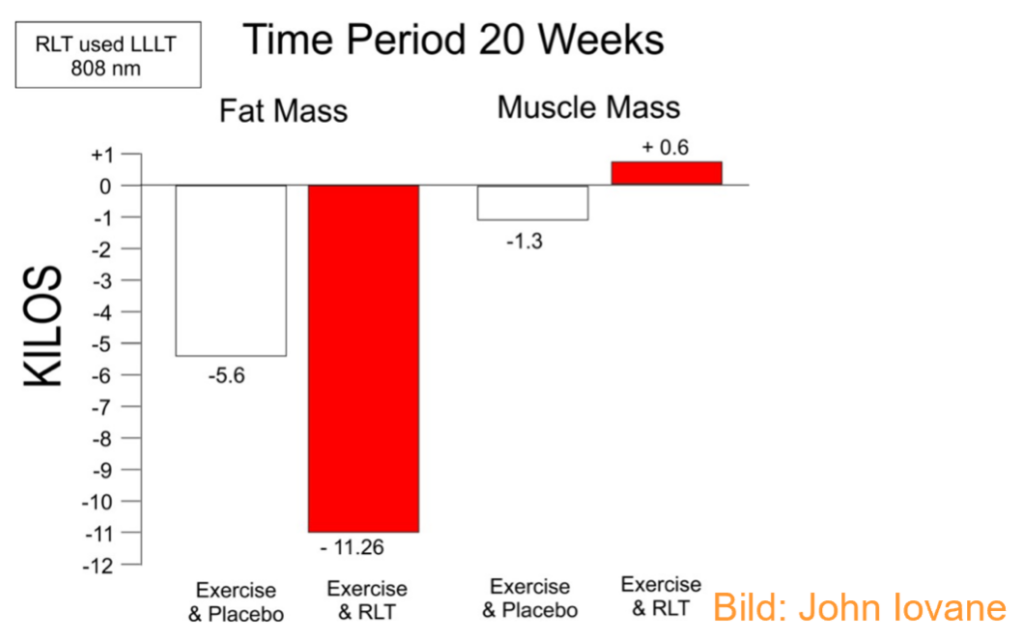
Can red light therapy cause weight loss even without exercise?
In the study mentioned, it was overweight women of relatively young age who trained with or without red light treatment. Their relatively large excess fat and young age mean that one can expect a relatively large weight loss, especially in combination with training. But what happens if you try to lose weight without training? Many overweight people are unaccustomed to training and may not even get started due to low self-confidence or reduced mobility. We may also be dealing with lazy people who simply do not "have the energy" to train or prioritize it. Regardless of the reason, it is interesting to know if weight loss can be achieved solely with LED light, and this has been investigated. In one study, 60 overweight adults were given LED light treatment with one of three different schedules (1). It was either three times a week for four weeks, twice a week for six weeks, or once a week for twelve weeks. All reduced waist circumference and body weight, but the standout group was the middle group, which lost an average of 1.1 kg of body fat. The study does not reveal whether perhaps one treatment a day for 20 weeks would be even better, but I suspect so since both frequency and treatment time matter. I would like to see a study with daily treatment for a year to really be able to draw conclusions about red light treatment and body weight. That is how the lamps are used for general health, and moreover, the weight gains are likely erased if you stop using the lamp, so long-term use is important.
Countouring
The word suggests that it is not just about weight loss, but also about the body's contours. That might be a healthier goal than just losing weight, since muscle mass should be preserved as much as possible. RLT has the effect that fat decreases while muscles increase. Regarding studies on "contouring," the results are somewhat scattered and some seem almost too good to be true. A South Korean study showed that a single treatment could reduce abdominal fat by 18% and double chin by 26% at a 12-week follow-up after treatment (2). I question whether that is even possible since it was a single treatment. In my decades as a nutritionist, I have never seen similar results from diet, exercise, or other interventions. Possibly surgery can yield results comparable to these, but that said, it is "peer-reviewed" research published in a respected journal.
However, if one chooses to disregard this study, there are quite a few others that show somewhat more moderate and perhaps credible results. In one study, a treatment was given once a week for six weeks, during which the circumference around the waist, hips, thighs, and abdomen was measured weekly (3). The definition of a successful treatment was set at 4.5 inches (11.43 cm), and as many as 72% of the participants reached the goal. The average reduction was actually a full 5.4 inches (13.72 cm), and over 80% of the participants were satisfied with their results. Note that the participants did not make any pronounced changes to their lifestyle otherwise, so the entire measured effect was attributed to RLT, although I would have liked to see a control group. In another similar study, 86 participants received treatment every other day for two weeks (4). Their results showed a 7.59 cm reduction in circumference when combining the measurements for the waist, hips, and both thighs. Other studies have also shown similar results (5, 7), and a reducing effect on cellulite has also been observed (6, 8).
- Ivana T. Croghan, Ryan T. Hurt, Darrell R. Schroeder, Shawn C. Fokken, Michael D. Jensen, Matthew M. Clark & Jon O. Ebbert. Low-level laser therapy for weight reduction: a randomized pilot study. Lasers in Medical Science volume 35, pages 663–675 (2020).
- Ik Jun Moon 1, Jae Won Choi 1, Chang Jin Jung 1, SeokHwan Kim 2, EunSoo Park 3, Chong Hyun Won 4. Efficacy and safety of a novel combined 1060-nm and 635-nm laser device for non-invasive reduction of abdominal and submental fat. Lasers Med Sci. 2022 Feb;37(1):505-512. doi: 10.1007/s10103-021-03288-z. Epub 2021 Apr 2.
- Carl R Thornfeldt 1, Paul M Thaxton 2, Carl S Hornfeldt 3. A Six-week Low-level Laser Therapy Protocol is Effective for Reducing Waist, Hip, Thigh, and Upper Abdomen Circumference. 2016 Jun;9(6):31-5. Epub 2016 Jun 1. J Clin Aesthet Dermatol.
- Elizabeth McRae 1, Jaime Boris Independent evaluation of low-level laser therapy at 635 nm for non-invasive body contouring of the waist, hips, and thighs. Lasers Surg Med. 2013 Jan;45(1):1-7. doi: 10.1002/lsm.22113.
- Mark S Nestor, Matthew B Zarraga, Hyunhee Park. Effect of 635nm Low-level Laser Therapy on Upper Arm Circumference Reduction: A Double-blind, Randomized, Sham-controlled Trial. J Clin Aesthet Dermatol. 2012 Feb;5(2):42-8.
- Michael H Gold 1, Khalil A Khatri, Kelley Hails, Robert A Weiss, Nathalie Fournier. Reduction in thigh circumference and improvement in the appearance of cellulite with dual-wavelength, low-level laser energy and massage. J Cosmet Laser Ther. 2011 Feb;13(1):13-20. doi: 10.3109/14764172.2011.552608.
- Mary K Caruso-Davis 1, Thomas S Guillot, Vinod K Podichetty, Nazar Mashtalir, Nikhil V Dhurandhar, Olga Dubuisson, Ying Yu, Frank L Greenway. Efficacy of low-level laser therapy for body contouring and spot fat reduction. Obes Surg. 2011 Jun;21(6):722-9. doi: 10.1007/s11695-010-0126-y.
- Elliot Lach 1 Reduction of subcutaneous fat and improvement in cellulite appearance by dual-wavelength, low-level laser energy combined with vacuum and massage. J Cosmet Laser Ther. 2008 Dec;10(4):202-9. doi: 10.1080/14764170802516680.
Author: Fredrik Paulún
The studies and research presented here are conducted by independent researchers and institutes. Nutrilight does not fund these studies and has no connection to their execution. These studies generally concern photobiomodulation and are not specifically related to Nutrilight's products.

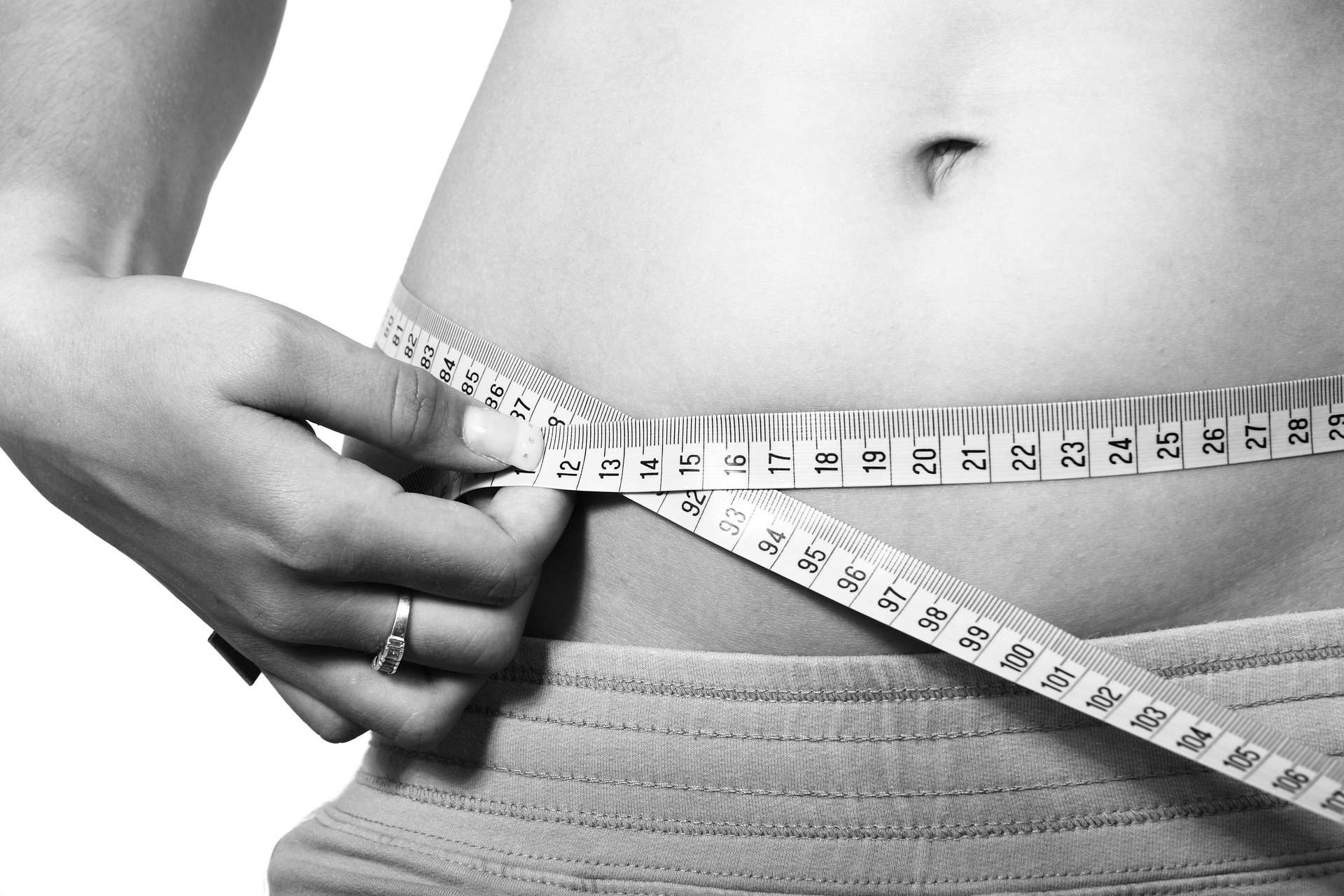
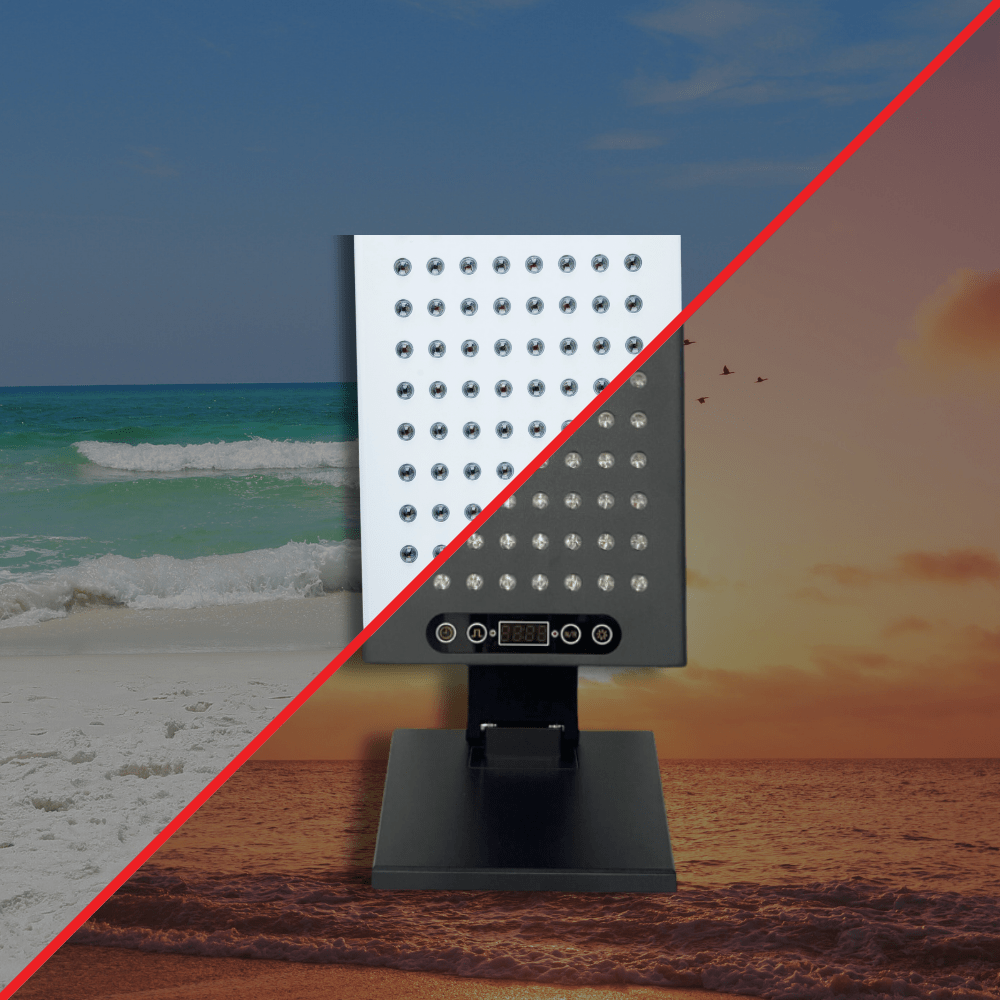

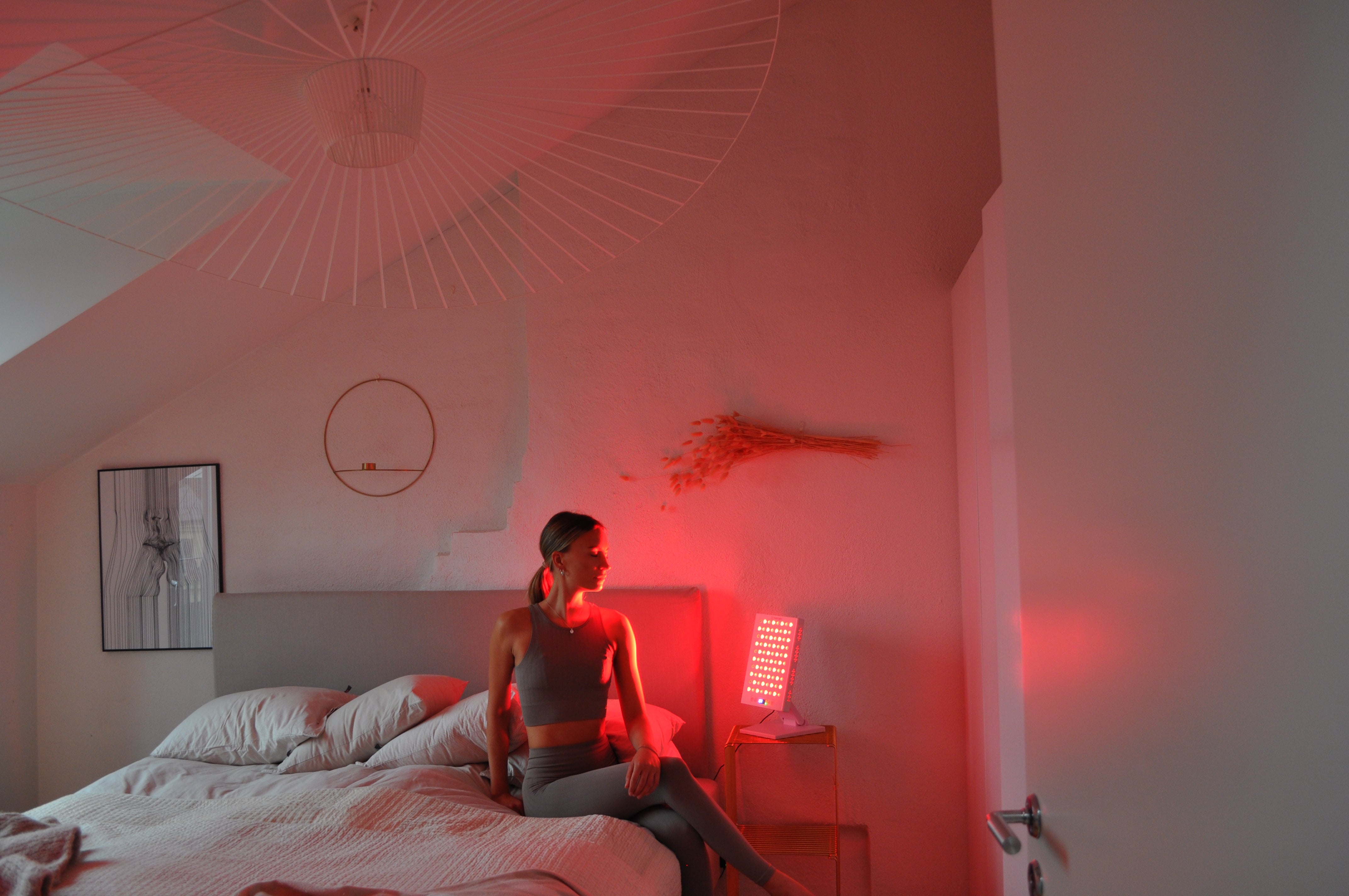
Share:
Red light therapy and gut health
Red light therapy and MS